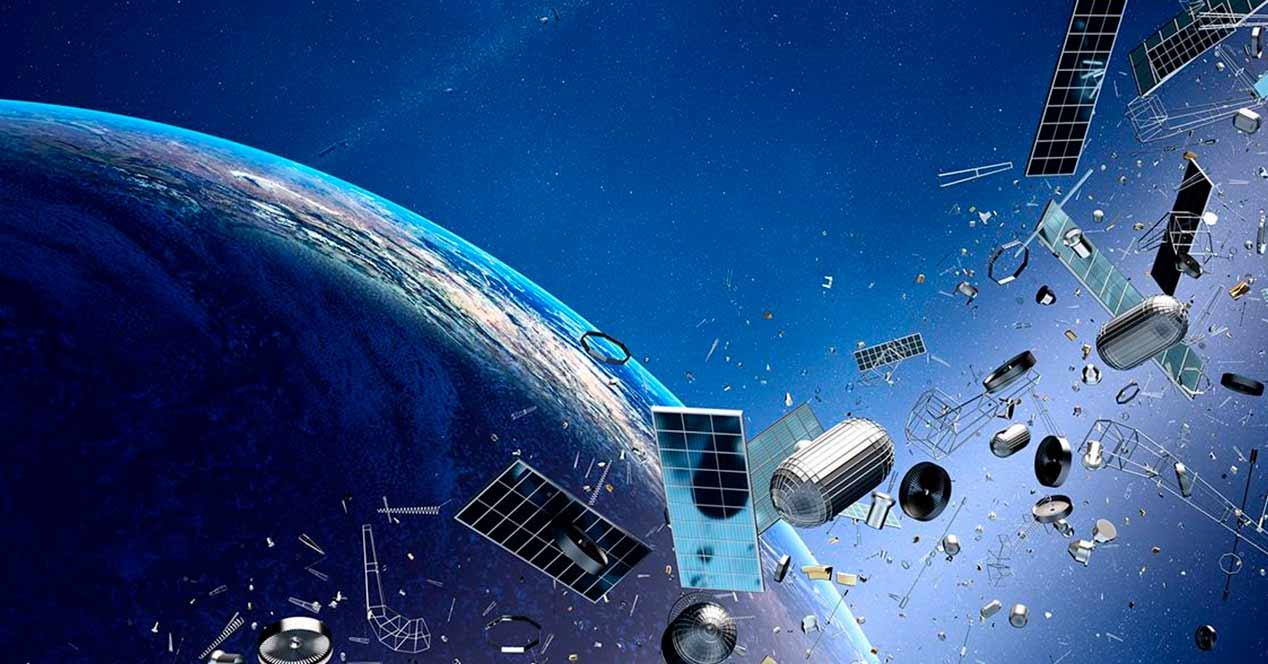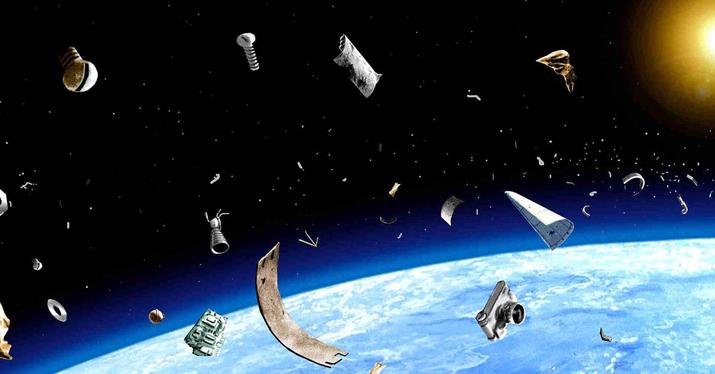
The human being seems very concerned about environmentalism on Earth. However, for more than half a century it has been launching more and more objects into low Earth orbits, where there are not many restrictions and the rise of private companies engaged in missions or space tours will only increase the number of mega-constellations of satellites and more space junk yet.
The scientific community agrees that we have reached a tipping point, where debris would continue to increase even if all launches ceased. This is the situation today.
9,900 tons of objects in space
The SondasEspaciales website catalogs the number of objects in space, both the satellites that orbit the Earth and the number of objects that have been left floating as space debris. According to the data it collects from the different space agencies, there are currently a total of 5,843 active satellites and more than 9,900 tons of objects in space in the sum of both concepts.
| Number of satellites in space | 8,636 |
| Satellites active now | 5,843 |
| Objects in the SSN catalog (> 10 cm) | 31,430 |
| Number of destructive events | 630 |
| Total mass of objects in space | 9,900 tons |
| Estimated objects >10 cm | 36,500 |
| Estimated objects >1 cm and <10 cm | 1,000,000 |
| Estimated objects < 1cm | 130,000,000 |
According to data provided by NASA, there are currently more than 20,000 pieces of debris around our planet that are larger than a baseball. But it is not only that, since more than half a million pieces of debris that have the same dimensions as a marble are also in orbit. Along with all these pieces, there are also more than 100 million fragments smaller than a millimeter in size.
According to NASA, there are more than 20,000 pieces of debris larger than a baseball orbiting the Earth and more than 500,000 that are somewhat larger than the size of a marble. There are also more than 100,000,000 particles smaller than 1 mm. pic.twitter.com/k6KGbXRGmF
– Mar Gómez (@MarGomezH) September 5, 2021
All this space junk can be a big problem when carrying out different space missions. When taking off from Earth, if a rocket passes through an area where the concentration of garbage is higher, it can put the integrity of the ship and the safety of the people inside it at risk. Precisely from certain destructive events thousands of debris fragments have also emerged.
| Date | Event | Objects | Fragments >10 cm |
| 11 January 2007 | ASAT China | FY-1C | 3,500 |
| February 10, 2009 | Impact | cosmos 2251 | 1,668 |
| 15 November 2021 | AST Russia | cosmos 1408 | 1,500 |
| June 3, 1996 | Burst | Pegasus Step-2 Rocket | 754 |
| February 10, 2009 | Impact | Iridium 33 | 628 |
| February 2008 | Burst | cosmos 2421 | 509 |
What do we do with space junk?
After so many decades of accumulating fast-moving debris, in the form of worn-out rocket stages, missing screws and paint chips, debris from solid-propellant rocket motors, dead or dying satellites, and scattered fragments from anti-satellite missile tests (all of which could damage or destroy other devices), low Earth orbits are full of space debris.

Space Junk
The figure seems to be increasing, since we are in full swing of mega-constellations made up of thousands of satellites, such as Starlink, a broadband Internet network deployed by the company SpaceX, and many other similar projects: another mega-constellation is already being deployed of the OneWeb company, and Amazon’s Kuiper project, which aims to create one of up to 3,200 satellites in the near future.
Other types of mechanisms have been tested to try to reduce the amount of garbage orbiting the Earth, such as the use of a satellite that acted like a magnet and attracted the debris to it. The use of robotic satellites that are responsible for picking up space debris and de-orbiting it is also a possibility.